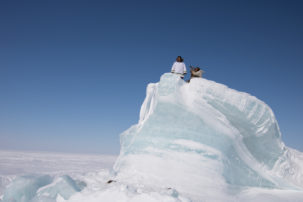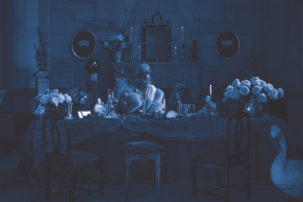Lately, artists Nadia Myre and Alan Michelson have been doing a lot of thinking about how the city of Venice, Italy, connects to the past and present of Indigenous peoples in what is now called North America.
“In the 16th century, publishing was centred around Venice,” Michelson says. And as a result, Venice was where some of the first European maps and books of North America were published.
“Venetian beads were used as money around the world,” adds Myre. “They were used as ballast in ships that were then traded for slaves brought to North America, were traded for land.”
“So we as native people are implicated in that history. We are part of that history, in a way,” says Michelson.
Now, these artists’ creative recraftings of those histories are on view along the Fondamenta Sant’Anna in Venice as part of the exhibition “Volume 0.” The show, opening today and running until July 31 to coincide with part of the Venice Biennale, is curated by UK-based Max Carocci and presented by Zuecca Projects.

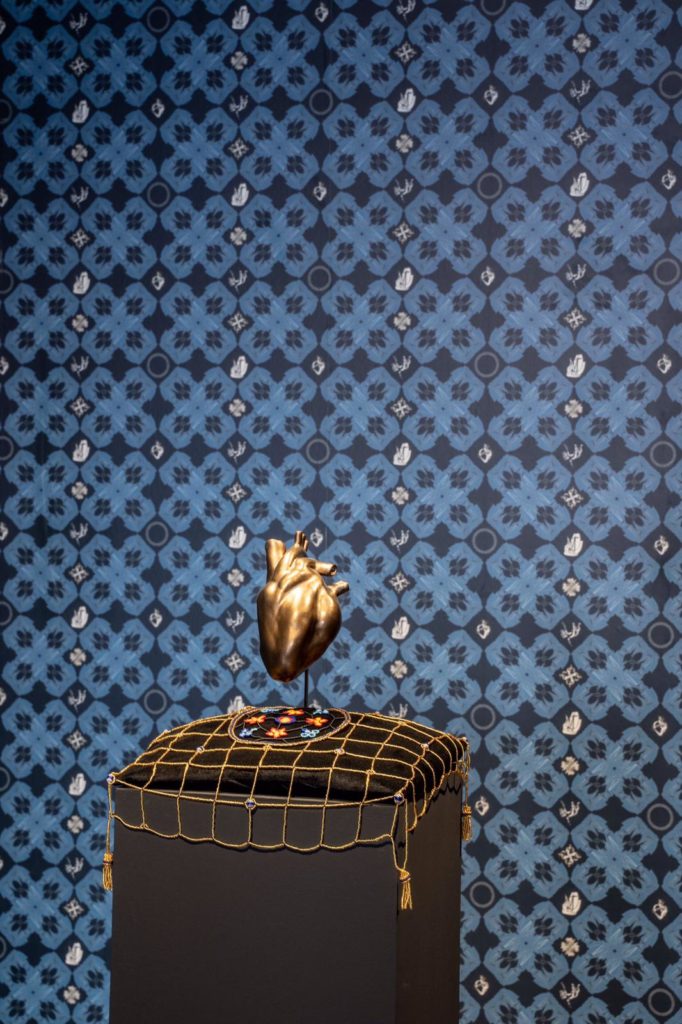 Foreground: Nadia Myre, Volume 1, 2019. Earthenware, beads, threads. Background: Nadia Myre, Damask (Volume 0), 2019. Wallpaper installation. Photo: Karolina Sobel.
Foreground: Nadia Myre, Volume 1, 2019. Earthenware, beads, threads. Background: Nadia Myre, Damask (Volume 0), 2019. Wallpaper installation. Photo: Karolina Sobel.
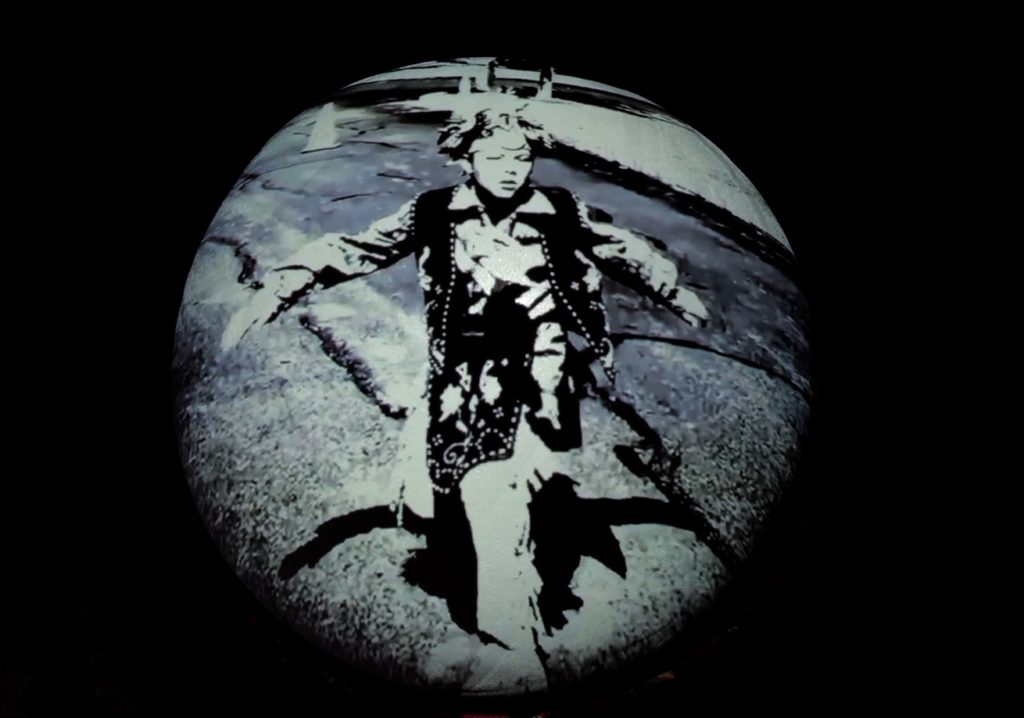
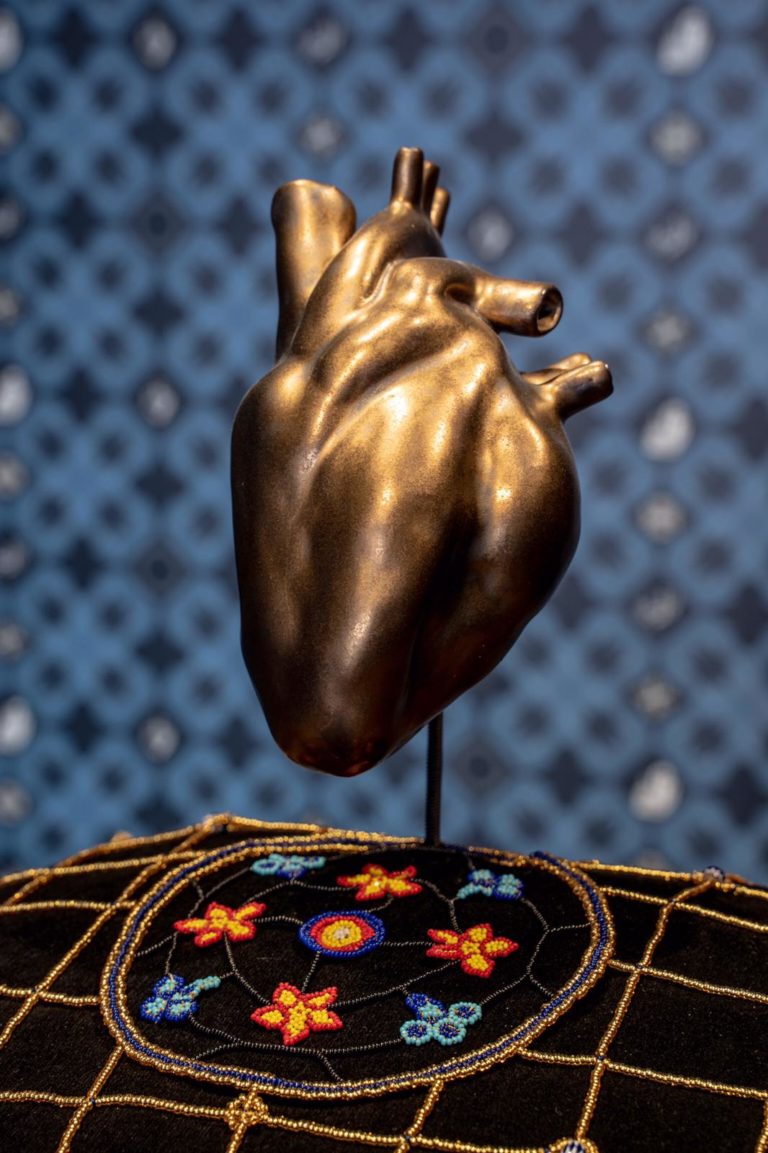 Foreground: Nadia Myre, Volume 1, 2019. Earthenware, beads, threads. Background: Nadia Myre, Damask (Volume 0), 2019. Wallpaper installation. Photo: Karolina Sobel.
Foreground: Nadia Myre, Volume 1, 2019. Earthenware, beads, threads. Background: Nadia Myre, Damask (Volume 0), 2019. Wallpaper installation. Photo: Karolina Sobel.
 Alan Michelson, Theatrum Orbis Terrarum (Theatre of the World), 2019. Four-channel video with sound, marine buoys, variable dimensions.
Alan Michelson, Theatrum Orbis Terrarum (Theatre of the World), 2019. Four-channel video with sound, marine buoys, variable dimensions.


